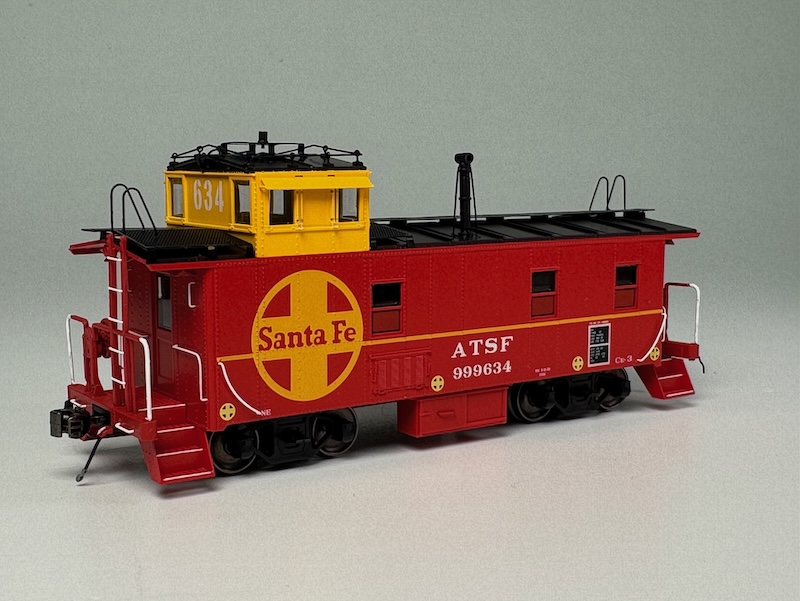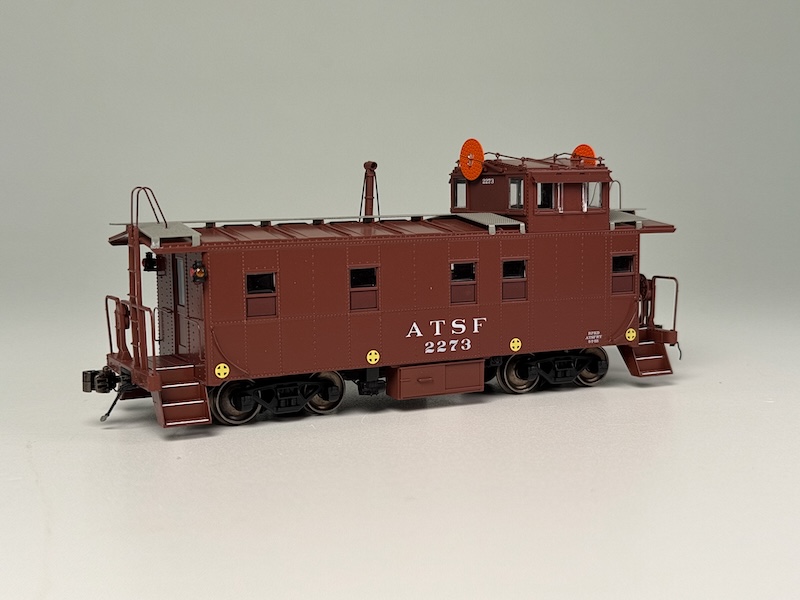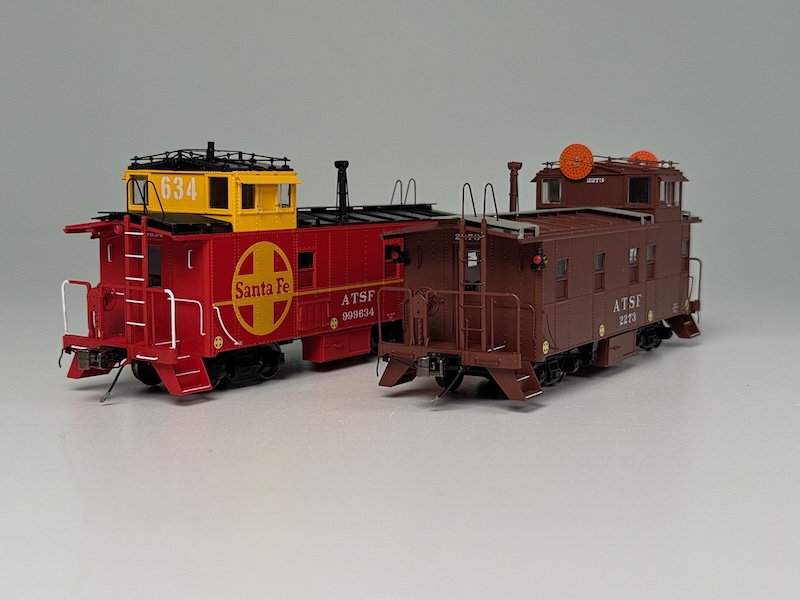 Perhaps the most iconic caboose in all of railroading is the Santa Fe offset cupola caboose. Literally hundreds of thousands of models of these cars have been produced in various scales through the years from countless manufacturers. However, other than rare handcrafted brass replicas, the peaked-roof versions of these cabooses – known as “waycars” on the Santa Fe, have never been mass produced as plastic models — until now.
Perhaps the most iconic caboose in all of railroading is the Santa Fe offset cupola caboose. Literally hundreds of thousands of models of these cars have been produced in various scales through the years from countless manufacturers. However, other than rare handcrafted brass replicas, the peaked-roof versions of these cabooses – known as “waycars” on the Santa Fe, have never been mass produced as plastic models — until now.
Available now from Class One Modelworks are a family of Santa Fe offset cupola peaked-roof waycars in three major variations – as-built cars finished in mineral red with wig-wag signals, radio-equipped versions of the former, and Ce-3 rebuilt waycars in bright indian red with yellow cupolas. Each model features road-number specific artwork and details, including wand-activated illuminated lanterns or end markers on all versions with a flicker-free capacitor circuit. Details include etched metal rectangular grate or Morton pattern running boards, etched metal end platforms and steps, different underbody equipment configurations, roof antennae where applicable and much more. Multiple road numbers available per variation. $149.99 each available direct.
ClassOneModelWorks.com, 8610 NW 107th Terrace, Kansas City, MO, 64153

The most modern variation in this inaugural production of Class One’s Santa Fe Waycars are the rebuilt Ce-3s finished in bright Indian red with yellow cupolas and a large Santa Fe Cross herald on its flanks. These cars were rebuilt from earlier 2200-class and 500-class cabooses in 1968-69. The yellow cupolas were to denote their fixed assignments to either yard or local service. These modernized cabooses feature wand-activated red markers and end platform lighting at each end of the car.

With its prototype constructed in 1949, Class One’s HO scale reproduction of Santa Fe caboose 2273 displays the distinctive “wig-wag” signals mounted onto each face of the cupola. Before the adoption of radio communications the wig-wag signals were used to communicate “stop” and “highball” (proceed) instructions from the caboose to the engineer at the head end of the train.



